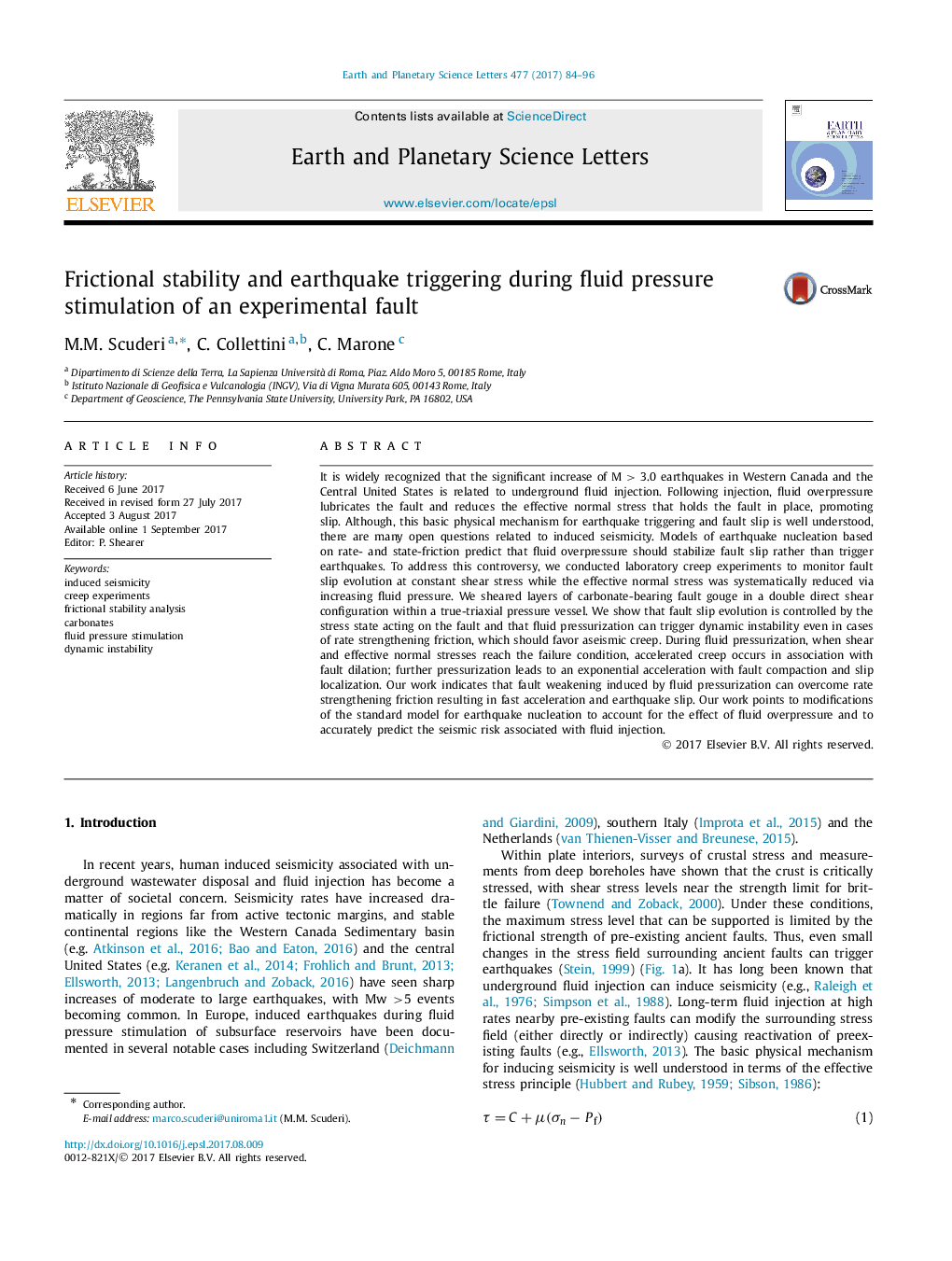| کد مقاله | کد نشریه | سال انتشار | مقاله انگلیسی | نسخه تمام متن |
|---|---|---|---|---|
| 5779535 | 1634679 | 2017 | 13 صفحه PDF | دانلود رایگان |
عنوان انگلیسی مقاله ISI
Frictional stability and earthquake triggering during fluid pressure stimulation of an experimental fault
ترجمه فارسی عنوان
پایداری اصطکاکی و زلزله در هنگام تحریک فشار مایع یک خطای تجربی
دانلود مقاله + سفارش ترجمه
دانلود مقاله ISI انگلیسی
رایگان برای ایرانیان
کلمات کلیدی
لرزه خیزی ناشی شده، آزمایشهای خزش تجزیه و تحلیل ثبات اصطکاک، کربنات ها، تحریک فشار مایع، بی ثباتی دینامیک،
موضوعات مرتبط
مهندسی و علوم پایه
علوم زمین و سیارات
علوم زمین و سیاره ای (عمومی)
چکیده انگلیسی
It is widely recognized that the significant increase of M > 3.0 earthquakes in Western Canada and the Central United States is related to underground fluid injection. Following injection, fluid overpressure lubricates the fault and reduces the effective normal stress that holds the fault in place, promoting slip. Although, this basic physical mechanism for earthquake triggering and fault slip is well understood, there are many open questions related to induced seismicity. Models of earthquake nucleation based on rate- and state-friction predict that fluid overpressure should stabilize fault slip rather than trigger earthquakes. To address this controversy, we conducted laboratory creep experiments to monitor fault slip evolution at constant shear stress while the effective normal stress was systematically reduced via increasing fluid pressure. We sheared layers of carbonate-bearing fault gouge in a double direct shear configuration within a true-triaxial pressure vessel. We show that fault slip evolution is controlled by the stress state acting on the fault and that fluid pressurization can trigger dynamic instability even in cases of rate strengthening friction, which should favor aseismic creep. During fluid pressurization, when shear and effective normal stresses reach the failure condition, accelerated creep occurs in association with fault dilation; further pressurization leads to an exponential acceleration with fault compaction and slip localization. Our work indicates that fault weakening induced by fluid pressurization can overcome rate strengthening friction resulting in fast acceleration and earthquake slip. Our work points to modifications of the standard model for earthquake nucleation to account for the effect of fluid overpressure and to accurately predict the seismic risk associated with fluid injection.
ناشر
Database: Elsevier - ScienceDirect (ساینس دایرکت)
Journal: Earth and Planetary Science Letters - Volume 477, 1 November 2017, Pages 84-96
Journal: Earth and Planetary Science Letters - Volume 477, 1 November 2017, Pages 84-96
نویسندگان
M.M. Scuderi, C. Collettini, C. Marone,
